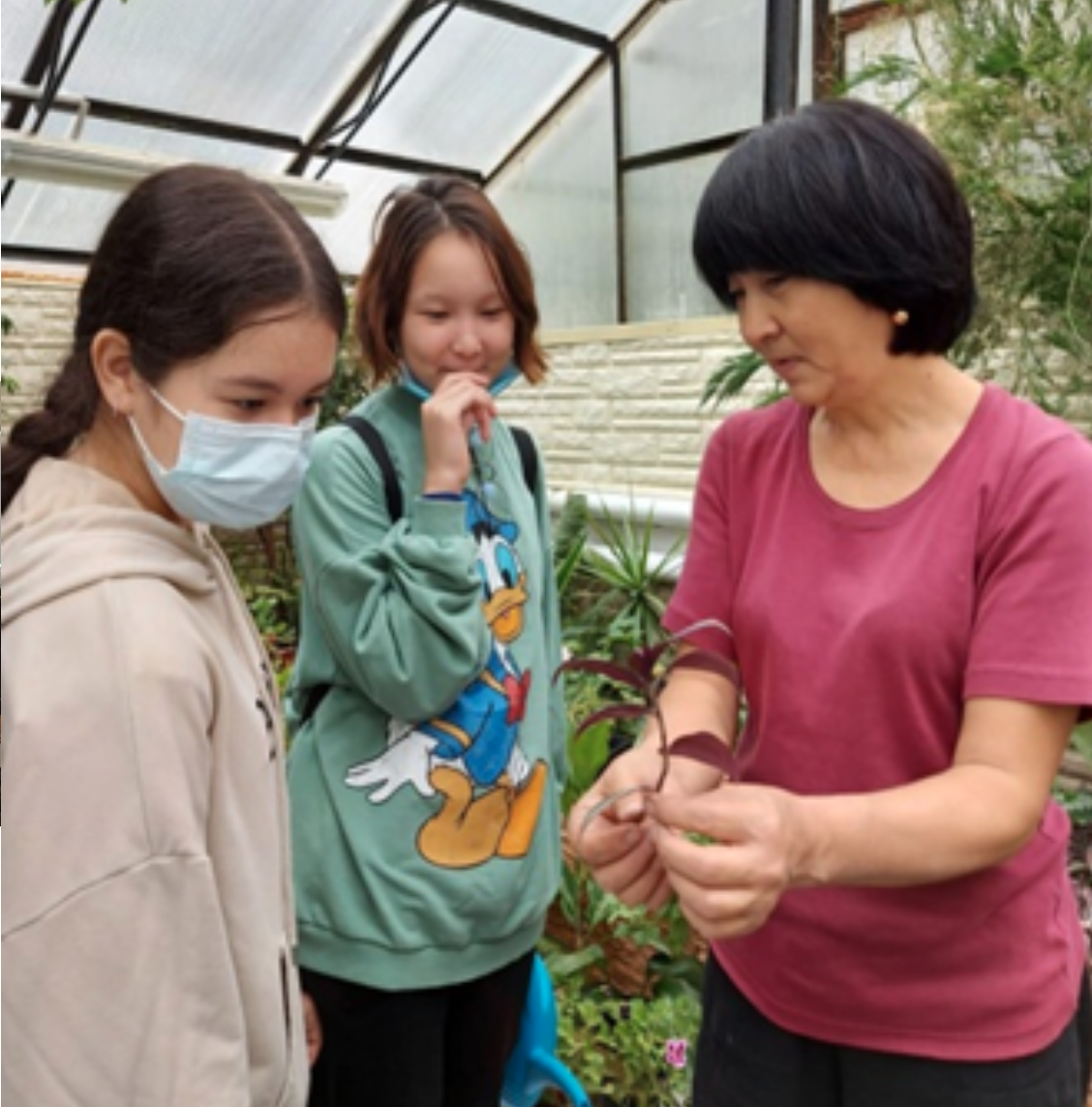On the bank of the River Chagan in the city of Oral, West Kazakhstan Oblast, there is a wonderfully beautiful natural corner; an organisation for extracurricular education, and a regional environmental and biological centre. The centre has a zoo for children, a greenhouse, a teaching and experimentation area, a fruit and berry garden, an alpinarium, an arboretum, a vegetables section, and a plant nursery.
Young naturalists are provided with everything they need for nature-preserving activities. They learn agrotechnical methods of cultivating home and open-ground plants, and observe the growth and behavior of animals. They take part in competitions, festivals, scientific and practical conferences, and business projects, as well as carrying out practical, scientific and experimentation works.
The participants of the green architecture study group conduct numerous experiments to cultivate ornamental and flowering trees and bushes, with the integration of landscaping activities. Abdiakhat Tim, one of the active participants, loves looking after the plants and animals, is interested in economics, business, and environment, and actively does charity work. He invited his friends, environment activists Alexandra, Anel and Ayazhan, to create a team named Ushqyn.


The team’s goal was to build an arboretum within the eco-bio-center to improve the environment. In order to fund the project, they decided to take part in Shell NXplorers Khazakshtan’s Green Generation Contest. They contacted the ecobiocenter manager, who supported them and allocated a land plot (formerly used to grow beetroots and carrots) for the project. In order to preserve natural resources, they used drip irrigation to provide water for the arboretum.
The arboretum the team designed was an entire open-air nature lab; a living laboratory for students and teachers, and a relaxing place for visitors. It contains rare ornamental and flowering trees and bushes, such as philadelphus, weigela, forsythia, boule de neige, contoneaster, and a ‘Lilliput’ lawn, as well as garden trails, landscaping, and architectural figures. In three to four years, it will mature to become a large, beautiful arboretum.